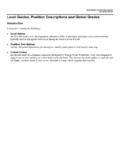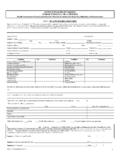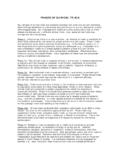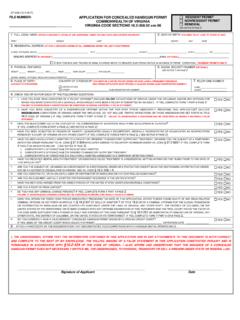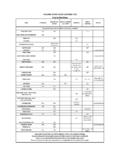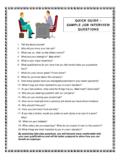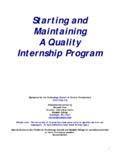Transcription of Writing S.M.A.R.T. Goals - University of Virginia
1 UHR, Employee Development 1 Writing Goals Developing sound Goals is critical to managing your own and your employees performance. Each year you will ask your employees to set Goals for the upcoming year/evaluation period. When you ask your employees to write their Goals , teach them to create Goals that support your own Goals for the same period. A goal is defined as one that is specific, measurable, achievable, results-focused, and time-bound. Below is a definition of each of the goal criteria. Specific: Goals should be simplistically written and clearly define what you are going to do. Specific is the What, Why, and How of the model. Example: By August 1, 2009, implement a new performance management system for Classified Staff, A& P Faculty, and University Staff using clearly defined processes and guidelines so employees and managers can more competently evaluate performance and develop their careers. Explanation of Example: Implement a new performance management system for Classified Staff, A& P Faculty, and University Staff = what using clearly defined processes and guidelines = how so employees and managers can competently evaluate performance and develop their careers = why Measurable: Goals should be measurable so that you have tangible evidence that you have accomplished the goal.
2 Usually, the entire goal statement is a measure for the project, but there are usually several short-term or smaller measurements built into the goal. Example: By August 1, 2009, implement a new performance management system for Classified Staff, A& P Faculty, and University Staff using clearly defined processes and guidelines so employees and managers can more competently evaluate performance and develop their careers. Explanation of Example: The essential metric is whether or not the system is operational by August 1st. Achievable: Goals should be achievable; they should stretch you slightly so you feel challenged, but defined well enough so that you can achieve them. You must possess the appropriate knowledge, skills, and abilities needed to achieve the goal. You can meet most any goal when you plan your steps wisely and establish a timeframe that allows you to carry out those steps. As you carry out the steps, you can achieve Goals that may have seemed impossible when you started.
3 On the other hand, if a goal is impossible to achieve, you may not even try to accomplish it. Achievable Goals motivate employees. Impossible Goals de-motivate them. Example: By August 1, 2009, implement a new performance management system for Classified Staff, A& P Faculty, and University Staff using clearly defined UHR, Employee Development 2 processes and guidelines so employees and managers can more competently evaluate performance and develop their careers. Explanation of Example: In order for you to reach this goal, you must have a skill set, in this case in the area of performance management, that allows you to understand the nature of the goal, and the goal must present a large enough challenge for you to remain interested in and committed to accomplishing it. Results-focused: Goals should measure outcomes, not activities. Example: By August 1, 2009, implement a new performance management system for Classified Staff, A& P Faculty, and University Staff using clearly defined processes and guidelines so employees and managers can more competently evaluate performance and develop their careers.
4 Explanation of Example: The result of this goal is a process that allows employees and managers to more competently evaluate performance and develop their careers, not the individual activities and actions that occur in order to make the goal a reality. Time-bound: Goals should be linked to a timeframe that creates a practical sense of urgency, or results in tension between the current reality and the vision of the goal. Without such tension, the goal is unlikely to produce a relevant outcome. Example: By August 1, 2009, implement a new performance management system for Classified Staff, A& P Faculty, and University Staff using clearly defined processes and guidelines so employees and managers can more competently evaluate performance and develop their careers. Explanation of Example: August 1, 2009 provides you with a time-bound deadline. The concept of Writing Goals is very important for accomplishing individual Goals , which in turn are linked to department, division, and University Goals .
5 It is also critical for ensuring good communication between employees and supervisors so there are no surprises during annual performance evaluations. The following questionnaire will assist you in creating Goals . Begin by Writing your goal as clearly and concisely as possible. Then answer the related questions. Conclude by revising your goal, in the space allotted. Should you have any questions or require assistance, please contact UHR, Employee Development. UHR, Employee Development 3 Goal Questionnaire Goal: 1. Specific. What will the goal accomplish? How and why will it be accomplished? 2. Measurable. How will you measure whether or not the goal has been reached (list at least two indicators)? 3. Achievable. Is it possible? Have others done it successfully? Do you have the necessary knowledge, skills, abilities, and resources to accomplish the goal? Will meeting the goal challenge you without defeating you? 4. Results-focused.
6 What is the reason, purpose, or benefit of accomplishing the goal? What is the result (not activities leading up to the result) of the goal? 5. Time-bound. What is the established completion date and does that completion date create a practical sense of urgency? Revised Goal.
